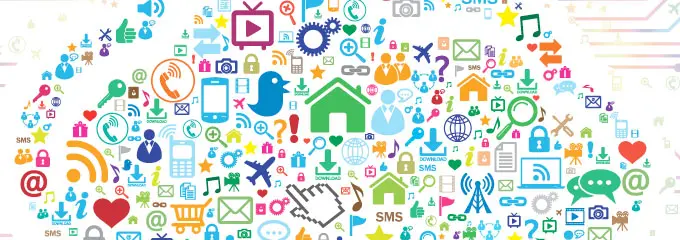Trying to connect “everything that is not yet connected”
28/11/2014

The day will soon come when a visit to the grocery store will no longer be needed to fill the refrigerator. An order will be automatically sent to the supermarket over the Internet when the refrigerator detects it’s missing some items. Alvaro Retana, engineer at Cisco, is passionate about the Internet of Things or, as he likes to call it, the “Internet of Everything.”
The work of Retana and his team focuses on connecting every type of device to the Internet and having them communicate with each other independently.
During his participation at the LACNIC 22 meeting held in Santiago, Chile, Retana reported on the progress of the Internet of Things in Latin America and the Caribbean and noted that the region is taking the lead in several projects relating to the interconnection of devices that are used for much more than communicating with people.
What is the Internet of Things?
The idea is to go beyond connecting people with people and to move to connecting people with data and processes. The goal is to be able to interconnect any type of devices and, perhaps, that they are able to communicate among themselves independently. This is why it’s called the Internet of Things. At Cisco, we like to call it the Internet of Everything, and the idea is that it is not only about things speaking among themselves but about people talking with things and processes. An ecosystem will be generated where we will all be completely interconnected.
What does “connecting everything that is not connected” mean?
Today, each person has multiple devices. We have our computers, our telephones, our tablets, and they are all connected to the Internet. Most communications, however, are between persons. We use our devices to connect to other people, yet many devices can be connected to a network. For example, a building’s HVAC system, security systems, or simply the devices we use daily, such as a refrigerator connected to the supermarket which can order groceries. These things are not currently connected. The Internet of Things’ main goal is to connect what is not already connected.
How far has the Internet of Things come in Latin America?
We’ve taken the lead in several things, particularly in the field of research. Several university projects have studied the Internet of Things. For example, there have been projects with sensors to measure humidity, temperature and erosion in different Latin American forests and jungles, or projects that use signals to measure a bridge’s movement and its load-bearing capacity. Also, implementations have not been limited to the academic sector but have also spread to the industrial sector. Examples of this include coordinating a production line within a factory or the ways in which cities are beginning to implement security monitoring systems or smart parking systems.
What can you tell us about the latest industry news?
We’ve tried to include the systems that already exist on IP networks. We’re not only addressing the creation of new devices, but also the evolution of protocol translation systems. In addition to that, there’s the development of routing protocols, security systems, and systems that allow us to collect data and later analyze it. It’s not just about connecting things, but also about analyzing data storage.
(Free access, no subscription required)